5 young designers who are exploring future materials
The start of the year is a fitting time to explore and wonder upon the future possibilities of materials. As technologies develop, lifestyles change and mind-sets evolve, materials, the very fabric of our daily lives, are required to respond to a new set of demands. It falls to the designer to take the lead in pushing the boundaries and with it, our expectations, of the materials that surround us.
Here in the UK, January sees the interim exhibitions from students on the postgraduate design courses based at the world-renowned Central Saint Martins and the Royal College of Art schools. This year it was apparent that a notable number of aspiring designer-makers have been spending their time of study to willingly explore the potential of materials. Here we pick out five standout projects that we’ll be sure to check back in on when fully complete at their graduation.
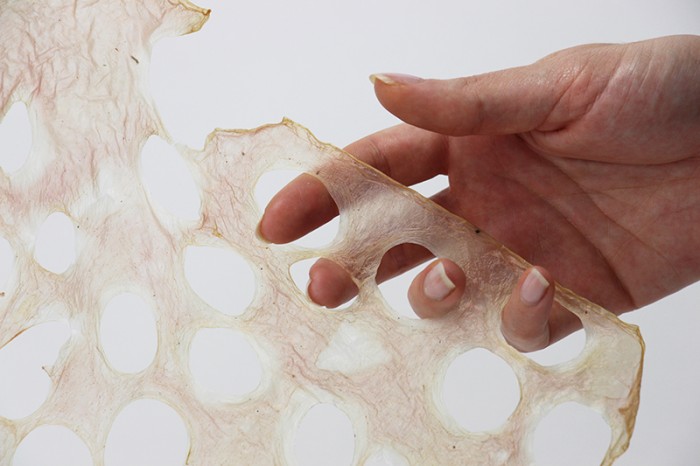
A common theme across all courses was an engagement in transforming plastic waste. Royal College collaborative duo Jessica Gregory and Cristina Carbajo are driven by the over-use of plastic in the production of our products and packaging, which leads to an average of 78 million metric tonnes of plastic waste worldwide per year. Their project MBRn researches alternatives to plastics that exude similar qualities but remain harmless to the environment throughout all stages of their lives. Utilising glucose that is derived from food waste, the pair are developing a process that allows them to grow a cellulose based plastic akin to some of the earliest forms of polymer that were soon replaced with the petroleum based alternatives that we use today. The cellulose structure caused by bacteria is highly mould-able and strong, and the pair sees plenty of potential for the next stage where, “the project will undergo tests such as natural colour application and branding to maximise the commercial opportunities of bacterial cellulose.”
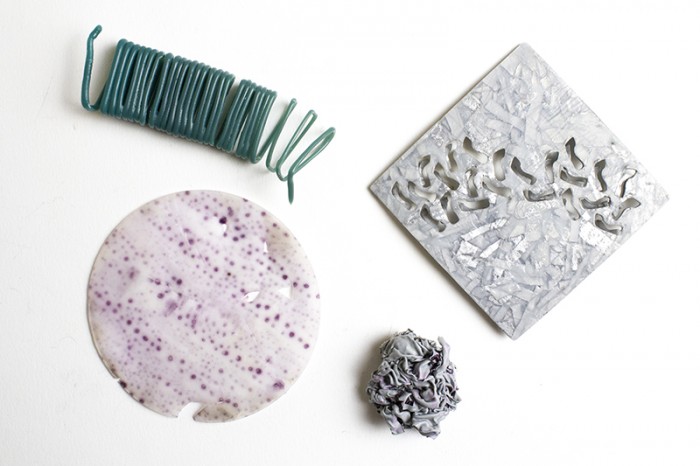
Marie Holm is another Royal College student concerned with plastic waste; although her investigations are focused upon directly harnessing used plastics. Harvesting household waste and debris from the Thames she is intent on converting the unwanted into the desirable. Whilst there are already examples of recycled plastic surfaces on the market, by experimenting with traditional dye techniques, printmaking and various surface finishes the project seeks to challenge the look and preconceptions of the finished article.
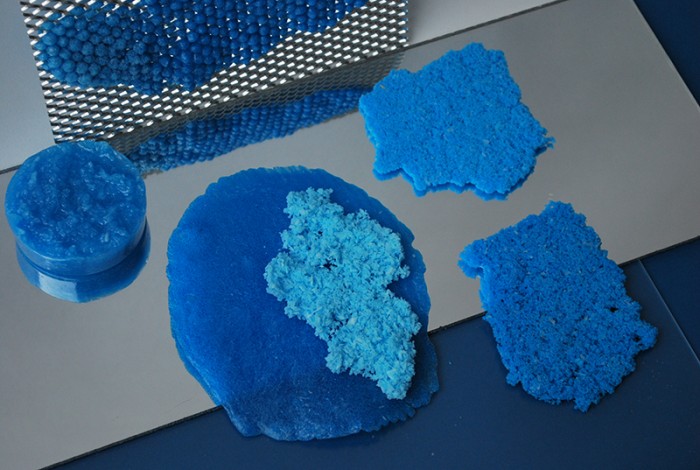
Central Saint Martin student Charlotte Kidger also seeks to create future alternatives to plastic, this time using reprocessed Styrofoam. Applying heat, chemicals and compression to the material she is able create a multitude of useful outcomes with varied grades, textures, tones and weights. Underlining the value in what is generally seen as waste, Kidger plans to create a classification system that dovetails the new materials engineered properties as well as the more sensorial and emotional qualities that come from haptic responses such as warmth and texture. As the project develops further Kidger plans to make it one that causes awareness through discussion.
“I would like to create well crafted, highly executed materials from waste plastic that create curiosity around the original materials starting point. I like the conversation that forms around people wanting to know the exact process of how I’ve transformed the material.”
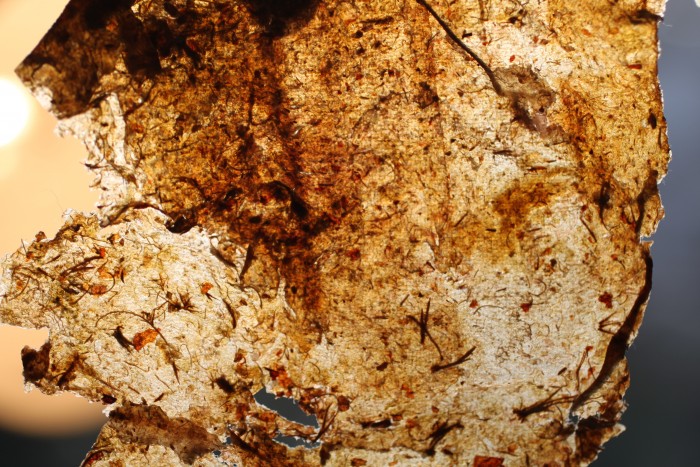
Plastic isn’t the only waste material that can be found in abundance and transformed into something new, as highlighted by Ludovica Cantarelli’s project Wine Matters. When sipping a glass of wine is easy to forget that the liquid within was once in a solid form. The estimated 50 million hectoliters of wine produced in Italy alone creates a 2 million tonne mass of solid residues. Creating new material possibilities for a future audience, Cantarelli seeks to create a circular solution for this prolific waste.
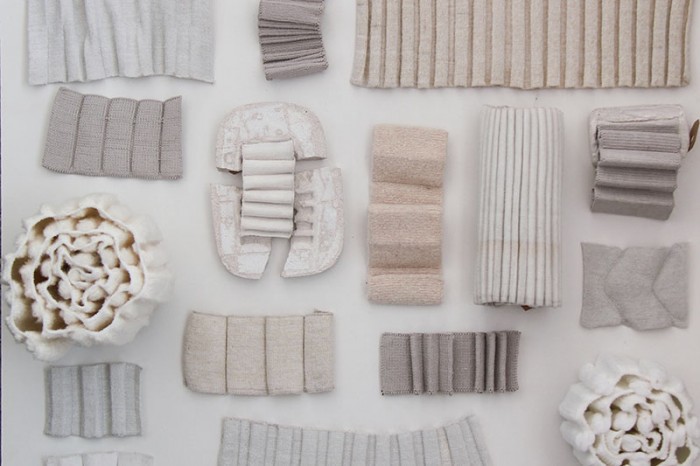
It’s important to note that, whilst a noble pursuit, utilising waste materials isn’t a prerequisite for postgraduate study on such courses. One such project came from Royal College student Tiya Dahyabhai, whose experimental knitted textile collection looks to push the boundaries nonetheless. Combining pleats with everyday composites, Dahyabhai seeks to demonstrate applications for textiles within our built architectural environment. Questioning how we interact with materials in such environments she exploits the inherent abilities of knitted textiles to contract and expand back to their original forms. By bringing them together with metal and heat reactive fibres alongside softer stretch yarns and lambswool her research seeks to achieve structural yet tactile materials.
Keep up to date with our latest trend reports by signing up to our newsletter here




